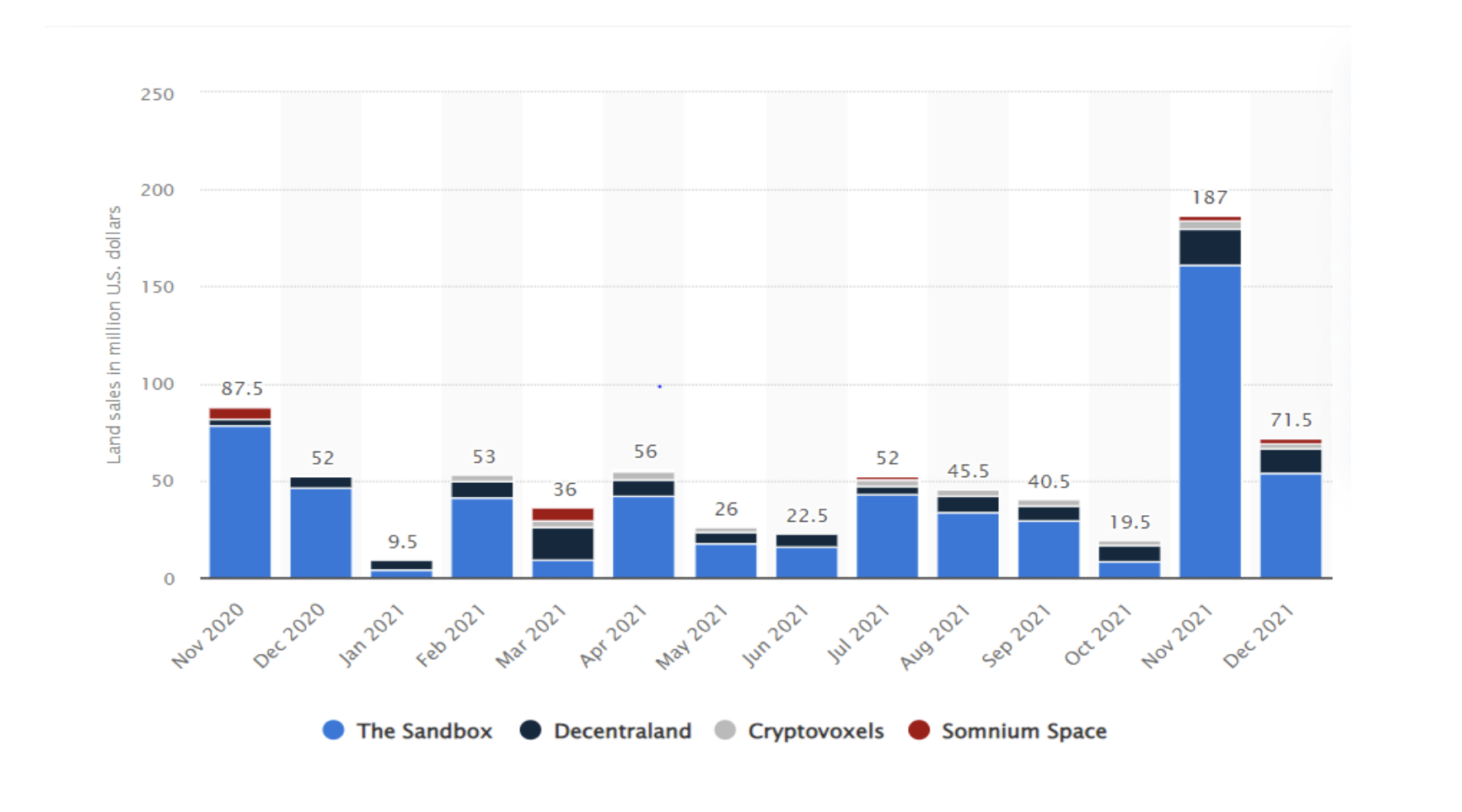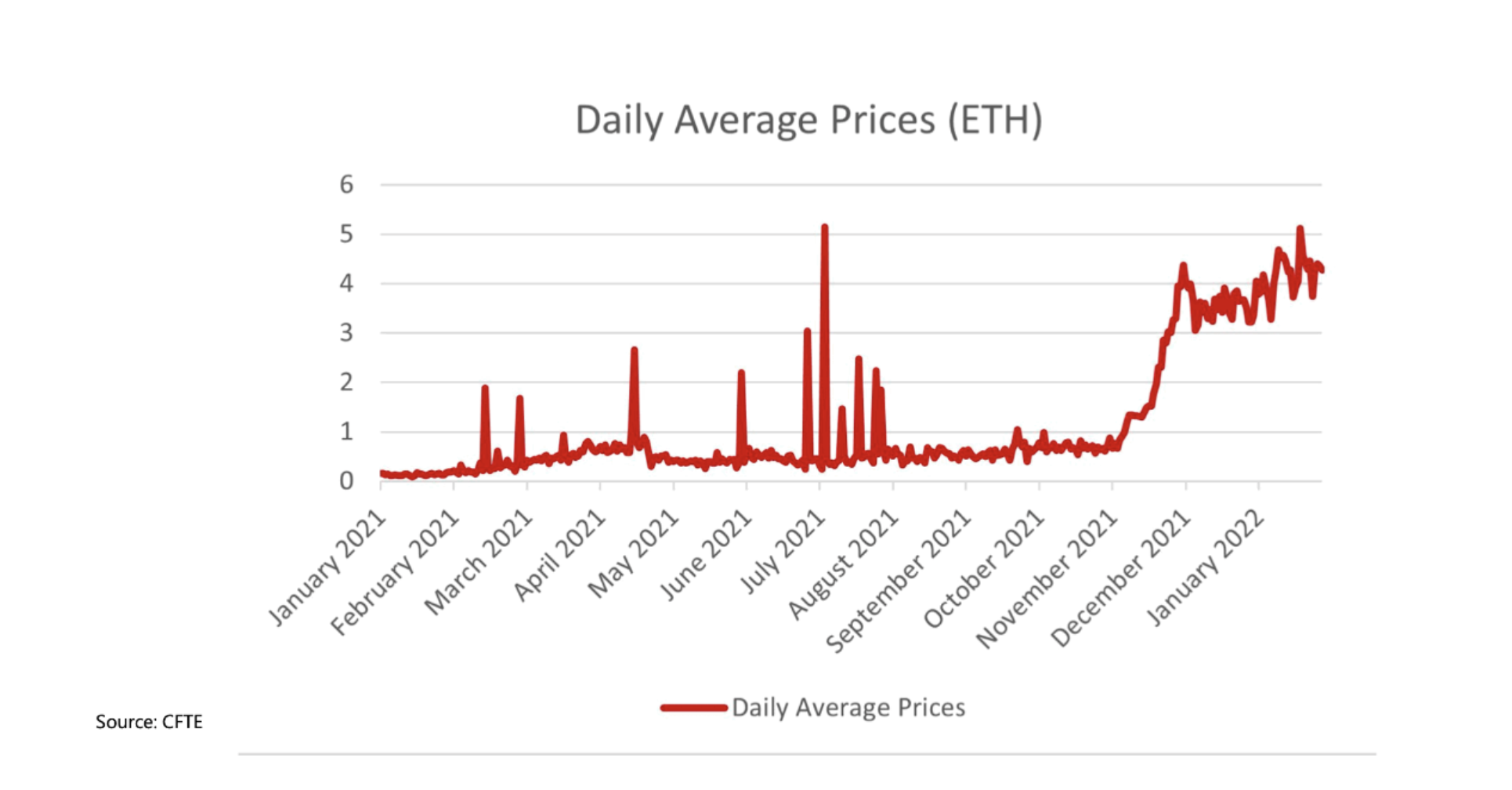News & Insights
Will the Metaverse Act As a Catalyst for Financial Digitization?: ‘Meta-Fi’

Onur Küçük | MANAGING PARTNER
15.09.2022“As the crypto industry grows, there will be an increasing array of financial activities on the public blockchain. That's why we want to make sure we're ready to not only support that but also provide relevant services.”
Tyrone Lobban, JPMorgan's head of Blockchain Launch and Onyx Digital Assets
The point where Metaverse has come can be described as an advanced version of Web 3.0. Therefore, the metaverse; As a decentralized structure, it can be defined as a collaborative and designed internet experience managed by communities, with confidentiality provided by the blockchain. By 2030, the metaverse market is expected to be somewhere between 8-13 trillion dollars, and the number of users is expected to reach 5 billion in 8 years. When we examine the parcel prices of the lands sold in the metaverse universe, we see that JP Morgan draws attention to the fact that the price of the parcel in the universe doubled in only 6 months in 2021. In addition, in the Web 3.0 metaverse, the land parcel price, which was $ 6,000 in June, was promoted to $ 12,000 as of December. In June 2021. The sale price of land in Decentraland was $ 913,000, while real estate company Every Realm announced that it would build a shopping mall on the land it bought. While Gucci is preparing to buy land in Sandbox and offer a digital experience to its customers, Warner Music stated that it will establish a concert theme park on its land. For the volume to reach this level in the Metaverse world, improvements in infrastructure, hardware and storage are required.

Sales value of virtual land parcels in The Sandbox, Decentraland, Cryptovoxels and Somnium Space metaverses from November 2020 to December 2021
Source: Statista
https://www.statista.com/statistics/1290698/sales-value-of-real-estate-in-metaverse/
Property prices on Metaverse Source: CFTE
https://www.forbes.com/sites/ronshevlin/2022/02/04/digital-land-grab-metaverse-real-estate-prices-rose-700-in-2021/?sh=2eb8ad567cdc
What Is the Equivalent of Money in the Metaverse? How Will Values Be Determined?
The money used in the Metaverse will not be the same as the physical money we use today. Cryptocurrencies will be used as today's physical money in different types, so money flows will also become different from our physical world experience. Blockchain technologies will be the most important factor in ensuring an uninterrupted user experience. Different types of crypto assets are expected to dominate the metaverse. However, since the crypto money ecosystem is a multi-chain structure by nature, cryptocurrencies will need to coexist with central bank digital currencies and stable coins.
So, to buy NFT, it is necessary to open a crypto wallet first, then buy cryptocurrencies and get the NFT in question from the crypto marketplace. However, in the regions where regulations are appropriate in today's metaverse ecosystem when the necessary infrastructures are provided, the consumer will not need to convert their money into crypto assets. NFT purchases can be made directly with a debit card and credit card. The recent collaboration between Coinbase NFT marketplace and Mastercard is an example of this situation. With this and similar collaborations, the complex processes required for NFT procurement will be left behind, and the competition between NFT marketplaces will increase.
Finance Side of Metaverse
When we talk about developments and regulations on issues such as laws to prevent money laundering, cryptocurrencies, property rights, De-Fi (Ethereum-based decentralized finance), and the existence of regulations, we arrive at the concept of 'Finance in the Metaverse'. In the Metaverse, finance is abbreviated as 'Meta-Fi'. Meta-Fi can be defined as an umbrella term covering all financial services that will be needed in the metaverse.
In Metaverse, a certain amount of time is required for the development of the technological infrastructure necessary for the virtual inter-world experience, the ease of use by the masses, and the increase of trust. To facilitate this entire transition process, a combination of products and services offered by metaverse finance (Meta-Fi), decentralized finance (De-fi), centralized finance, and traditional finance needs to be created. Thus, a new ecosystem will be created with new products specially designed to meet the unique needs of this sector. The financial infrastructure of this age, which is developing step by step, will be shaped by the developments in the metaverse. For users in this new world, a wide range of products and services, from Tokens or Items to financing a new business to be established in the metaverse, will be on our agenda soon.
Let's talk briefly about which areas of finance will be touched and what developments will occur in the Metaverse. As explained above, the financial metaverse is an ecosystem where existing and traditional currencies and emerging digital-specific crypto assets, stable currencies, and central bank digital currencies coexist with new forms of money that exist thanks to blockchain technologies. We can say that the first of these areas is money and the second is property rights. It is thought that NFTs, which are immutable, unique, and capable of proving ownership, can be used to determine property rights in the Metaverse. The determination of property rights will also provide the necessary basis for the use, valuation, and trade of digital assets. We can say that within the scope of Meta-Fi, solutions for the needs of the purchase-sale transactions and financing of digital assets have begun to be produced. Showing NFTs as collateral while taking a loan or withdrawing a loan to get an NFT are the best examples in this regard. Of course, these are just the beginning steps. The third financial pillar in Metaverse is the wallet infrastructure. One of the most demanding tasks of finance in Metaverse in terms of time and technical resources will be to provide the wallet infrastructure. Currently, there are numerous cryptocurrencies available, financial flows proceed with multi-chain structures, and users can access their crypto wallets with methods called multiple private keys. All this causes financial transactions in the metaverse to be complex and challenging compared to the digital application experience that we are used to.
Financial institutions have a great responsibility to provide users with the experience they are used to and to organize and facilitate these processes. In addition, by starting to offer custody services to financial institutions, it becomes very important to provide users with an environment where they can securely perform transactions. In this regard, financial institutions around the world started to work with different developers on the necessary infrastructures for security and custody services. For example, BNY Mellon, the oldest bank in the USA, has signed with blockchain analysis company Chainalysis. It was stated that it will continue to work with Chainalysis and other leading fintech companies to provide Bitcoin custody services to its customers and to monitor their cryptocurrency compliance in the risk management program. Caroline Butler, Head of Global Custody, Tax, and Network Management at BNY Mellon, explained that they have developed their capabilities in the growing cryptocurrency industry and reflected this situation in their products.
For wallet and custody services in the financial metaverse, interoperability and cross-platform transitivity are of great importance due to the nature of the business. The financial infrastructure to be built accordingly must also adapt to this flexibility. It is predicted that a large number of micropayments will cover a large volume in metaverse finance. Therefore, there is a need for a financial structure that can work between different applications, is both decentralized and compatible with centralized platforms, can manage high transaction numbers without any problems, and can provide 24/7 service.
Financial institutions are expected to play an important role in providing liquidity, including certain De-Fi protocols. Therefore, in the metaverse, liquidity and markets are seen as other areas that makes up the financial pillar. Institutions are expected to provide liquidity support and take part in making De-Fi protocols more flexible and resilient. In addition, it is necessary to benefit from the knowledge and experience of financial institutions to create market stability and ensure efficiency in managing the exponentially growing number and diversity of digital assets. Institutions are expected to provide liquidity support and take part in making De-Fi protocols more flexible and resilient. In addition, it is necessary to benefit from the knowledge and experience of financial institutions to create market stability and ensure efficiency in managing the exponentially growing number and diversity of digital assets. An example of this is the combination of a real-life credit score and a credit score recorded on the blockchain to create a unique and hybrid credit score. The most important and final issue we need to address in the financial metaverse is decentralized finance. Meta-Fi can be considered as a new term that blends two technologies such as metaverse and De-Fi. In Metaverse, all decentralized financial instruments are gathered under the umbrella of Meta-Fi. Blockchain-based decentralization in Web 3.0 is needed to move activities and applications, where everyone can contribute and be rewarded, to the point where we expect the metaverse to come. As the Metaverse develops and progresses on its journey, financial solutions for all the needs and problems that will be encountered will be determined together by digital assets, applications, and real-life traditional financial solutions. So, it will be possible to provide more reliable, resilient, and innovative financial services.
In our next article, we will evaluate the banking sector and the legal dimension from the perspective of the financial metaverse.


